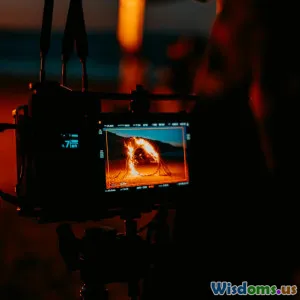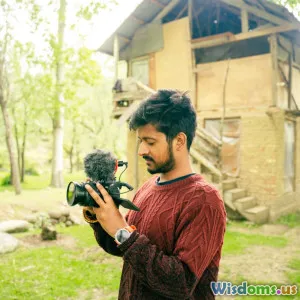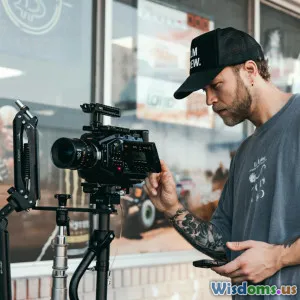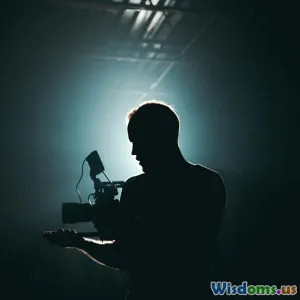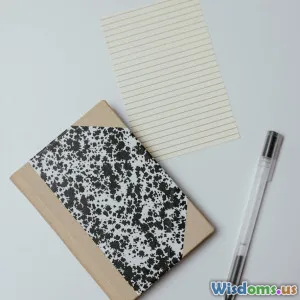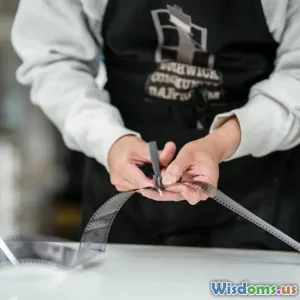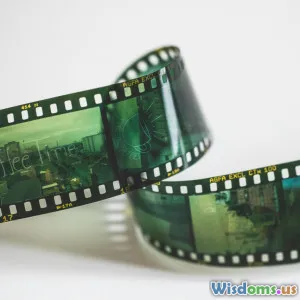
Why Aspect Ratio Could Make or Break Your Short Film
8 min read Discover how choosing the right aspect ratio can define your short film’s visual storytelling and audience impact. (0 Reviews)
Why Aspect Ratio Could Make or Break Your Short Film
Imagine this: two short films telling the exact same story but using different framing. One is shot in the classic 16:9 widescreen, while the other chose a square 1:1 ratio. Surprisingly, the mood, focus, and intimacy each conveys feel worlds apart. This dramatic difference easily demonstrates why the aspect ratio might be one of the most crucial—and overlooked—decisions in your filmmaking process.
Introduction
The aspect ratio is the proportional relationship between the width and height of your film’s frame, often represented in formats like 16:9, 4:3, 2.39:1, and so on. It’s fundamental in shaping how viewers perceive your visual story. Whether you want to create a claustrophobic feeling, emphasize landscape, or emulate a nostalgic vibe, the aspect ratio can be your secret weapon—or your Achilles’ heel.
This article dives deep into why understanding and thoughtfully selecting an aspect ratio could make or break your short film, backed by examples and practical insights.
What Exactly Is Aspect Ratio, and Why Does It Matter?
Defining Aspect Ratio
An aspect ratio is a simple fraction or ratio that dictates the frame’s width-to-height balance. For example, a 16:9 ratio (standard for HDTV) means for every 16 units in width, there are 9 units in height. This shapes the composition and how audiences experience the narrative.
Emotional and Practical Implications
The aspect ratio informs viewers subconsciously. It influences immersion, focus, and emotional tone. A wider frame can create a sense of openness, grandeur, or isolation, while a narrower frame can feel more intimate or constricting.
IGN’s interview with cinematographer Roger Deakins (known for work on Blade Runner 2049 and Skyfall) notes, “The frame ratio is the canvas of your story; choosing it correctly allows you to direct emotional attention with nuances.”
Examples of Common Aspect Ratios
- 4:3 (1.33:1): Classic TV, older films; feels nostalgic and focused.
- 16:9 (1.78:1): Standard HD video; versatile and widely accepted.
- 2.39:1 (CinemaScope): Ultra-widescreen; cinematic and epic.
- 1:1 (Square): Popular on social & Instagram; strikingly intimate.
How Aspect Ratio Impacts Storytelling and Visual Style
1. Setting the Tone and Mood
Each aspect ratio evokes different psychological responses. For example, The Grand Budapest Hotel (2014) famously used three different aspect ratios to indicate distinct time periods:
- 4:3 for the 1930s, evoking the vintage and confined feel.
- 1.85:1 for the 1960s, bringing mid-century flair.
- 2.35:1 for the modern timeline, adding a cinematic broadness.
This clever use of ratio enhances storytelling beyond dialogue or plot.
2. Guiding Audience Focus
A narrower ratio like 4:3 naturally forces viewers to concentrate more on subjects within a vertical field. This can heighten emotional intensity by isolating characters visually. On the other hand, wider formats enable extensive landscapes and environment-driven narrative cues, like in Lawrence of Arabia (2.20:1).
3. Reflecting Character Psychology and Themes
Filmmakers use ratios to mirror internal states. Darren Aronofsky’s Black Swan uses tight framing and muted aspect ratios to tunnel in on psychological turmoil.
4. Adapting to Distribution Channels
With the rise of mobile platforms, some filmmakers choose square (1:1) or vertical (9:16) formats tailored for social viewing. This strategic choice maximizes screen usage and engagement on phones.
Technical and Creative Considerations When Choosing an Aspect Ratio
Understand Your Project’s Story and Tone
Ask: Does your story benefit from claustrophobia, vastness, nostalgia, or intimacy? For a character-driven drama, tight ratios may work best, whereas an epic outdoors adventure may thrive in widescreen.
Cinematic Language and Genre Convention
Certain genres carry implicit expectations. Westerns and epics often use widescreen to capture vast landscapes, while classic horror sometimes employs 4:3 to create a constricted, eerie feel.
Equipment and Budget Constraints
Some cameras and lenses offer better performance for specific aspect ratios. It’s crucial to understand your gear. For indie filmmakers, cropping in post-production can reduce resolution.
Consider Audience Viewing Platforms
Your final aspect ratio should be optimized for where your audience will watch—cinema screens, YouTube, Instagram, or TVs. Compromise and creativity often come into play.
Real-World Examples Where Aspect Ratio Made All the Difference
“Mommy” (2014) by Xavier Dolan
Dolan used an unusual 1:1 square aspect ratio throughout the film, intensifying the emotional confinement his protagonists felt. This framing choice was a bold break from cinematic norms and strongly contributed to the film’s celebrated impact.
“Roma” (2018) by Alfonso Cuarón
Shot in 2.39:1 black and white, this choice enhanced photographic aesthetics and immersion, demonstrating how ratio interacts with tone and style.
TikTok and Instagram’s Vertical Explosion
Recent trend analysis shows up to 45% higher engagement rates for vertical video content on social platforms compared to traditional 16:9, underscoring how emerging formats demand flexible thinking.
Conclusion: Your Aspect Ratio Is a Storytelling Partner
Aspect ratio is much more than a technical setting; it’s an artistic decision that frames your entire narrative experience. Choosing intelligently empowers your short film to resonate emotionally and visually with audiences. Neglect it, and you risk diluting your story’s impact or muddling your aesthetic.
Next time you’re planning or editing your short film, ask yourself:
- Which ratio best conveys the emotional atmosphere?
- How does it focus or expand the viewer’s attention?
- Will it suit your audience’s primary viewing platform?
By marrying technical knowledge with creative intuition, you harness the power to make your short film as compelling and memorable as possible. The right aspect ratio? It could be your film’s defining creative choice.
Further Reading and Resources
- Roger Deakins on Cinematography: Shot by Shot interviews.
- Aspect Ratio in Film History: The Ratio Book by Witold Rybczynski.
- Vimeo Channel showcases different ratio examples and filmmaker interviews.
Consider experimenting with framing next time—you might just unlock a new level of storytelling brilliance.
Rate the Post
User Reviews
Popular Posts










